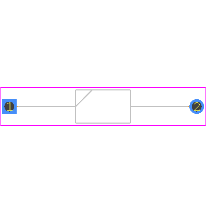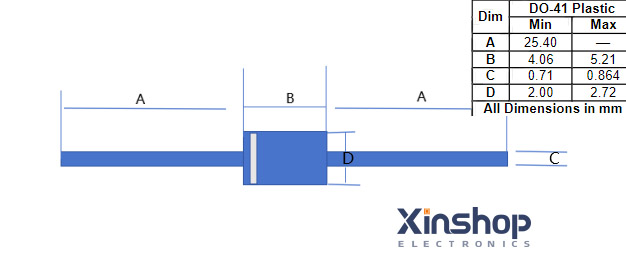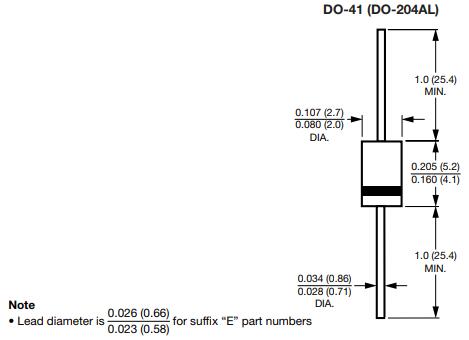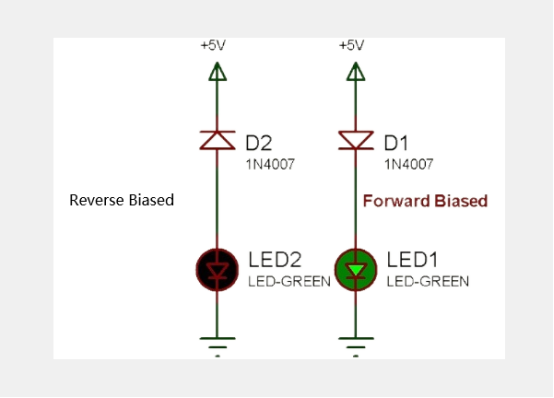1N5408 Vs 1N4007 Diode Which Works Better? Specification, PDF
Introduction:
In this article, we will compare these diodes based on 1N4007 specifications, 1N5408 diode specifications,1N4007 pinout, 1N5408 pinout, and other aspects like features, applications, diagrams, alternatives, and pros and cons. Additionally, we will address whether the 1N4007 can replace the 1N5408 diode.
1. 1N4007 Description:
The 1N4007 is a general-purpose rectifier diode with a maximum repetitive reverse voltage (VRRM) of 1000V. It has a forward voltage drop (VF) of 0.7V and a maximum average forward rectified current (IO) of 1A. This diode is commonly used in low-power applications such as power supplies, battery chargers, and voltage regulators.
2. 1N5408 Description:
The 1N5408 is also a general-purpose rectifier diode but with higher voltage and current ratings compared to the 1N4007. It has a VRRM of 1000V, VF of 1V, and IO of 3A. The 1N5408 is suitable for applications requiring higher power handling, such as power supplies, inverters, and motor drives.
1N5408 vs 1N4007 CAD Model
Symbol

Footprint

3D-Model

3. 1N4007 vs 1N5408 Pinout:

Both the 1N4007 and 1N5408 diodes come in a standard DO-41 package. They have similar pin configurations, with one end representing the anode and the other end representing the cathode. It is important to connect them correctly to ensure proper functioning in a circuit.
4. 1N4007 vs 1N5408 Applications:
The 1N4007 diode is commonly used in low-power rectification applications, whereas the 1N5408 diode is suitable for higher power rectification. Both diodes find applications in power supplies, battery chargers, voltage regulators, and other circuits requiring rectification.
5. 1N4007 vs 1N5408 Features:
The features of the 1N4007 and 1N5408 diodes include:
- Reverse recovery time: The 1N4007 has a typical reverse recovery time of 30μs, while the 1N5408 has a typical reverse recovery time of 50μs. This parameter determines how fast the diode recovers from the reverse-biased state.
- Maximum forward surge current: The 1N4007 can handle a maximum forward surge current of 30A, whereas the 1N5408 can handle 200A. This parameter is crucial in applications where the diode is subjected to short-term high currents.
6. 1N4007 vs 1N5408 Diagram:
Both diodes have a similar diode symbol in circuit diagrams, indicating their functionality as rectifiers. The diagrams illustrate the anode and cathode connections for proper orientation.
7. 1N4007 vs 1N5408 Alternatives:
If the 1N4007 or 1N5408 diodes are not available, there are alternative diodes that can be used depending on the specific requirements of the circuit. Examples include the 1N4148, 1N5819, and 1N5399, among others.
8. 1N4007 vs 1N5408 Pros & Cons:
Pros of the 1N4007:
- Lower forward voltage drop (VF) compared to the 1N5408.
- Suitable for low-power applications.
- Widely available and cost-effective.
Cons of the 1N4007:
- Lower maximum current rating (IO) compared to the 1N5408.
- Not suitable for high-power applications.
Pros of the 1N5408:
- Higher current rating (IO) compared to the 1N4007.
- Suitable for high-power applications.
- Can handle higher forward surge currents.
Cons of the 1N5408:
- Higher forward voltage drop (VF) compared to the 1N4007.
- May be overkill for low-power applications.
Package

Circuit

9. Can 1N4007 replace 1N5408 diode?
While the 1N4007 and 1N5408 are similar in many ways, it is generally not recommended to replace a 1N5408 with a 1N4007 diode. The 1N4007 has a lower current rating and may not be able to handle the higher power requirements of circuits where the 1N5408 is specified. It is important to select a diode that meets the voltage and current requirements of the circuit to ensure proper functionality and reliability.
Conclusion:
The choice between the 1N4007 and 15408 diodes depends on the specific application and power requirements. The 1N4007 is suitable for low-power applications, while the 1N5408 can handle higher power levels. It is crucial to consider the voltage ratings, current ratings, and other specifications when selecting a diode for a particular circuit. Always refer to the datasheets provided by the manufacturers for detailed information and consult with an experienced engineer if needed to ensure the appropriate diode is chosen for your application.
1N5408 Vs 1N4007 VS 1n5817 VS 1N5399

Frequently Asked Questions


















